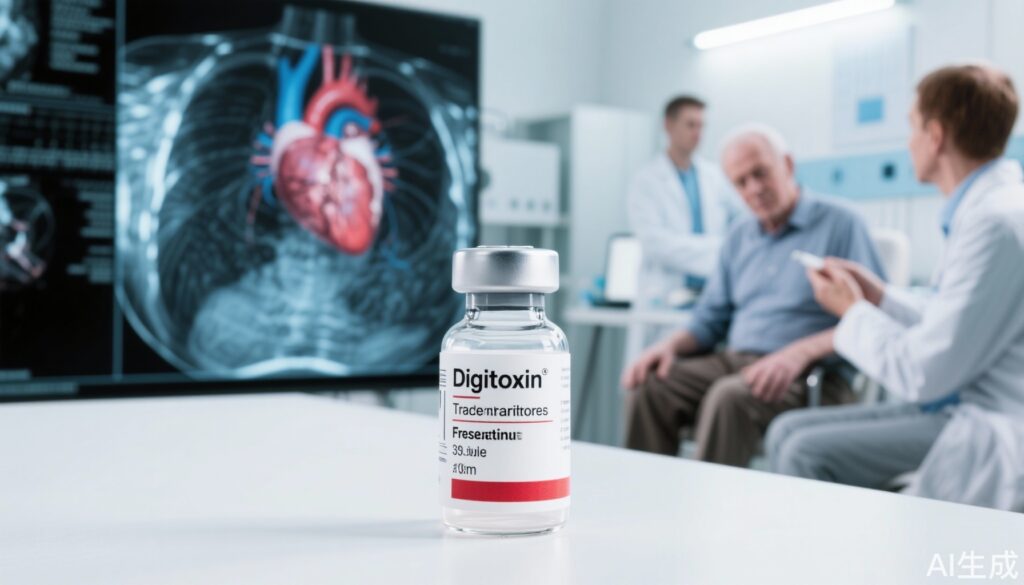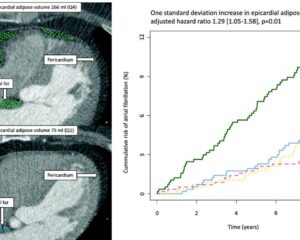Study Background and Disease Burden
Heart failure with reduced ejection fraction (HFrEF) remains a major contributor to morbidity and mortality globally, posing ongoing therapeutic challenges despite advances in guideline-directed medical therapy. The burden of HFrEF necessitates continued search for cost-effective, efficacious treatments that can improve survival and reduce hospitalizations. Historically, cardiac glycosides such as digoxin and digitoxin have been part of heart failure management; however, their use declined due to concerns over safety signals and the advent of newer agents. The DIGIT-HF trial was conceived to reassess the efficacy and safety of digitoxin when added to contemporary heart failure therapy in symptomatic patients with left ventricular ejection fraction ≤40%.
Study Design
The DIGIT-HF trial was a large-scale, multicenter, randomized, placebo-controlled study conducted over eight years, enrolling 1240 patients with symptomatic HFrEF. Participants were randomized to receive either digitoxin or placebo alongside guideline-directed medical therapy, which predominantly included beta-blockers, renin-angiotensin system blockers, angiotensin receptor-neprilysin inhibitors (ARNIs), and mineralocorticoid receptor antagonists (MRAs). The trial specifically excluded widespread use of sodium-glucose cotransporter-2 inhibitors (SGLT2i), as it was initiated before their approval. The primary endpoint was a composite of all-cause mortality or first hospitalization for heart failure, with a median follow-up of approximately three years.
Key Findings
DIGIT-HF demonstrated a statistically significant reduction in the primary composite endpoint in the digitoxin group compared to placebo (39.5% vs 44.1%), corresponding to an 18% relative risk reduction (hazard ratio [HR] 0.82; 95% confidence interval [CI], 0.69–0.98; P = 0.03) and an absolute risk reduction (ARR) of 4.6%, translating to a number needed to treat (NNT) of 22.
Both components of the primary endpoint contributed to benefit: all-cause mortality showed a trend toward reduction (HR 0.86; 95% CI, 0.69–1.07), as did first hospitalization for heart failure (HR 0.85; 95% CI, 0.69–1.05). Subgroup analyses suggested that patients with more advanced heart failure, particularly those with systolic blood pressure below 120 mm Hg and heart rates ≥75 beats per minute, experienced more pronounced benefits.
Safety data revealed a slight increase in serious adverse events (4.7% in digitoxin vs 2.8% in placebo), but there was no difference in sudden cardiac death rates between groups. Hospitalizations were frequent across both arms, with around 70% of patients hospitalized, predominantly for cardiac causes, setting DIGIT-HF apart from heart failure with preserved ejection fraction (HFpEF) trials where cardiac hospitalizations are fewer.
Five Lessons from DIGIT-HF
1. Safety Concerns with Cardiac Glycosides Are Unfounded in RCT Settings: Despite historical concerns, DIGIT-HF and previous randomized data (e.g., the DIG trial) show no evidence of harm in digitoxin use. Increased adverse events observed in earlier observational studies were likely confounded by selection bias, underscoring the crucial importance of randomized data to establish causality.
2. Digitoxin Shows Incremental Benefit Over Contemporary Therapy: Patients in DIGIT-HF received high rates of current standard therapies. Digitoxin added meaningful benefit despite this background, raising questions about the evolving complexity of treatment regimens and the potential for digitoxin as an additional inexpensive option.
3. Clinically Meaningful Effect Size With Cost-Effective Therapy: The modest but significant absolute risk reduction of ~5% compares favorably with results from recent SGLT2i trials, especially given digitoxin’s low cost. This is particularly relevant in cost-constrained healthcare settings.
4. Potential Role in Atrial Fibrillation (AF) Populations: Approximately one-third of participants had AF; however, subgroup analysis revealed consistent efficacy regardless of AF status. This contrasts with beta-blockers, which primarily benefit patients in sinus rhythm, suggesting digitoxin might be preferable for rate control in HFrEF patients with AF.
5. Statistical Robustness and Limitations: The trial’s slow enrollment and fewer-than-expected events resulted in a confidence interval for the primary outcome’s HR narrowly avoiding 1.0 and a P-value just under 0.05. This borderline statistical significance emphasizes the need to interpret the findings cautiously, though Bayesian analyses support a high probability of genuine benefit. Differential loss to follow-up between groups also tempers enthusiasm.
Expert Commentary
DIGIT-HF importantly distinguishes digitoxin from digoxin, the latter being the only cardiac glycoside available in many countries including the United States. Digitoxin offers pharmacokinetic advantages—such as steadier blood levels and reduced dependence on renal clearance—that may enhance safety and efficacy, particularly in patients with impaired renal function. The ongoing Dutch DECISION trial investigating digoxin in a similar population will provide critical comparative data.
Notably, the positive outcomes from DIGIT-HF evoke curiosity about old paradigms in heart failure management. Historically, digoxin was widely co-administered in seminal trials with beta-blockers, which raises the hypothesis that underlying inotropic support might potentiate benefits of beta-blockade.
Nonetheless, the subtleties in statistical robustness and the modest absolute effect size suggest digitoxin’s role should be integrated thoughtfully into clinical practice pending further validation.
Conclusion
The DIGIT-HF trial revitalizes interest in cardiac glycosides, specifically digitoxin, in the management of symptomatic HFrEF. It confirms safety and demonstrates a meaningful clinical benefit on top of modern, guideline-directed therapy, challenging prevailing skepticism about this old class of drugs. The findings encourage a re-examination of treatment algorithms and highlight a potentially cost-effective adjunct, particularly in resource-limited settings or specific patient subsets such as those with AF.
Further research, especially comparative studies of digitoxin versus digoxin and inclusion alongside SGLT2 inhibitors, is essential to refine treatment strategies. Meanwhile, clinicians should weigh digitoxin’s demonstrated benefits against the nuances of trial data and individual patient factors when considering its incorporation.
References
Bavendiek U, Großhennig A, Schwab J, Berliner D, Rieth A, Maier LS, Gaspar T, et al; DIGIT-HF Study Group. Digitoxin in Patients with Heart Failure and Reduced Ejection Fraction. N Engl J Med. 2025 Aug 29. doi: 10.1056/NEJMoa2415471. Epub ahead of print. PMID: 40879434.
Packer M, Gheorghiade M, Young JB, et al. Effects of digoxin on morbidity and mortality in patients with heart failure. N Engl J Med. 1997;336(8):525–533. doi:10.1056/NEJM199702203360801.
McMurray JJ, Solomon SD, Inzucchi SE, et al. Dapagliflozin in Patients with Heart Failure and Reduced Ejection Fraction. N Engl J Med. 2019;381(21):1995–2008. doi:10.1056/NEJMoa1911303.
Cleland JG, Tendera M, Adamus J, et al. The perindopril in elderly people with chronic heart failure (PEP-CHF) study. Eur Heart J. 2006;27(19):2338–2345. doi:10.1093/eurheartj/ehl213.


